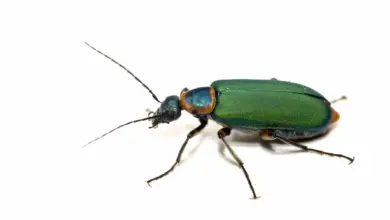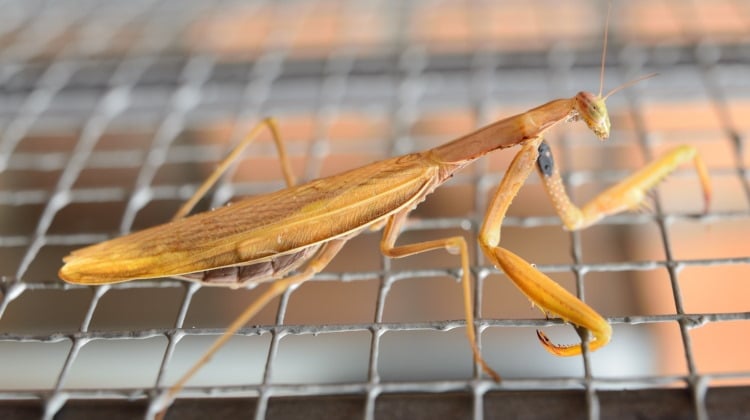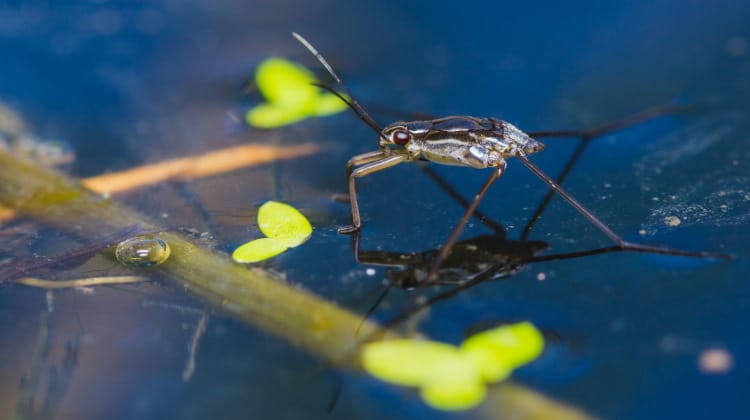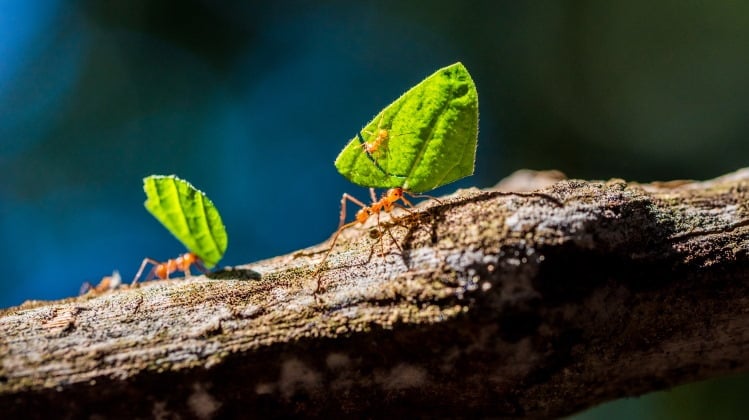The 10 Smartest Insects In The World
Discover The 10 Smartest Insects In The World
[modified-date]
[social-share]
It’s easy to look at insects and think “look at that gross, silly bug”.
But is that statement justifiable?
Can we rotate our heads 180 degrees? Can we navigate using the Earth’s magnetic field?
By observing insects, we can begin to understand how they interact with each other and their environment. This is a good measure of insect intelligence.
#10 Mantises
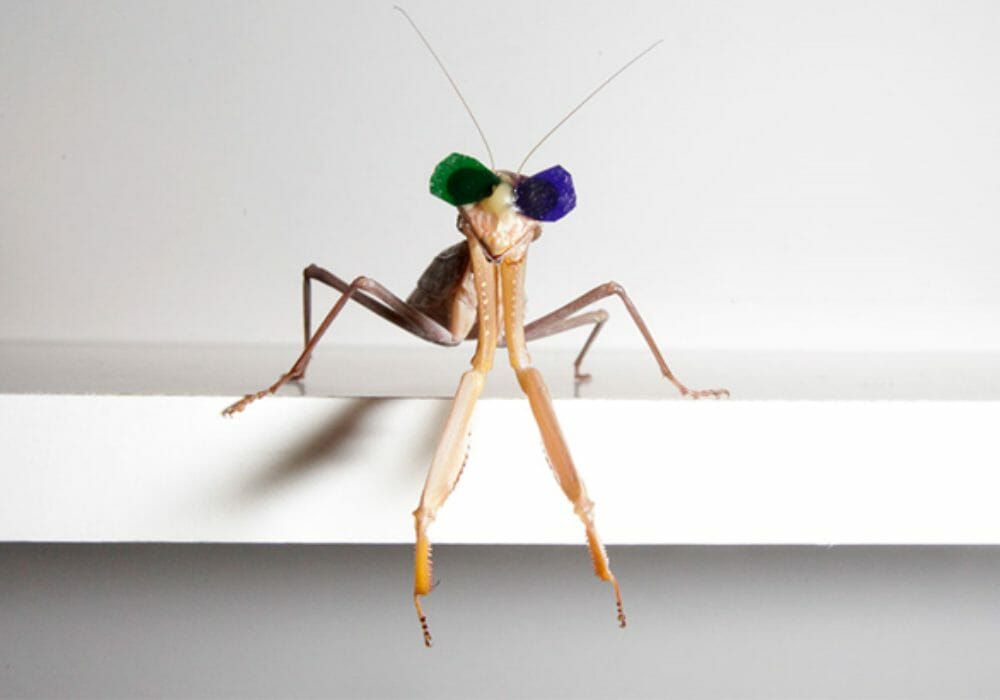
Photo by Mike Urwin, Newcastle University.
Mantises have a reputation for lacking table manners.
With one lightning-fast extension of their arms, they are able to snag anything sizable that strays too close.
Mantises are able to calculate attacks thanks to their amazing vision.
Not only are they able to learn and distinguish toxic prey from non-toxic prey, novel research suggests that praying mantises are the only known invertebrates to be able to see in 3D.
They use this 3D superpower to increase their depth perception of moving prey and deliver a fatal punch.
#9 Tarantula Hawk Wasps

We may not associate insects with being the best parents. But one group of wasps has evolved a nifty evolutionary tactic that ensures a head-start in their young.
The tarantula hawk wasp spends her days searching for tarantulas. Once she has her sights set, she paralyzes the helpless victim and drags it back to a premade burrow. Here, she lays a single egg upon the arachnid.
The hatched larva buries into the tarantula, eating away tissues and organs until it pupates into an adult wasp.
The larvae develop with an unlimited food source and without predators, making the tarantula hawk wasp one clever bug.
You can watch the tarantula hawk wasp hunting by clicking the link below:
#8 Dung Beetles

Dung beetles are as unique as they are clever.
It’s not that they roll poop, it’s about how they roll poop.
Related articles:
They are the only known animal in the entire animal kingdom that uses the Milky Way to help them navigate.
These intelligent beetles can align themselves in accordance with the brilliant strip of light in the night sky, and actively use the Milky Way to keep in a straight line whilst they move the poop.
The world of poop rolling is fierce and competitive. Dung beetles need to roll quickly and straight to avoid poop-ball theft.
#7 Monarch Butterflies

Monarch butterflies have achieved fame in the insect world for having one of the longest migrations of any insect.
Migrating over 3000 miles, monarchs leave their summer homes in Southern Canada and winter to the warmer climates of California and Mexico.
But how do millions of butterflies, with less than one million neurons in their brains, carry out such tremendous journeys? With a little ingenuity, of course.
Monarch butterflies can navigate based on the Earth’s magnetic field using a built-in internal compass. This was demonstrated in a recent study involving monarchs and magnets.
#6 Cockroaches
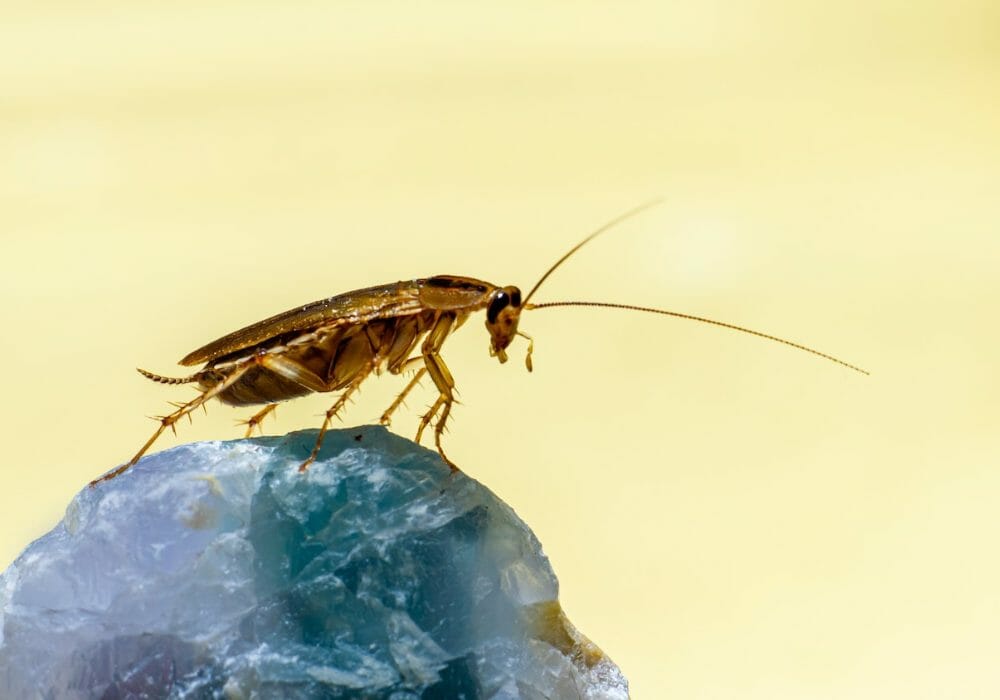
Ah, the humble cockroach.
Nothing but unhygienic, unsanitary pests.
Or are they?
A growing number of scientists are studying this hardy insect. And the results? Cockroaches are harboring a secret, they’re surprisingly clever.
They have the ability to learn and remember different routes; a skill not all animals are capable of doing.
Cockroaches can also be trained, suggesting they have the cognitive ability to learn. Perhaps we can use cockroaches’ cognitive abilities to our advantage?
#5 Termites

Across the savannahs of South America, Africa, and Australia, towering mounds rise from the ground.
The masterminds behind these towering constructions are termites, ant-like insects measuring no more than half an inch.
What’s really clever about these termite mounds is how efficiently they’re ventilated, a struggle we humans are still trying to finesse.
A large, central chimney extends from the gallery (the main underground bulk of the colony) to the top of the mound.
With fluctuating temperatures, hot air rises out of the chimney. Thin external walls allow for fresh air flow and the exchange of gasses to ensure the termites do not suffocate.
#4 Dragonflies
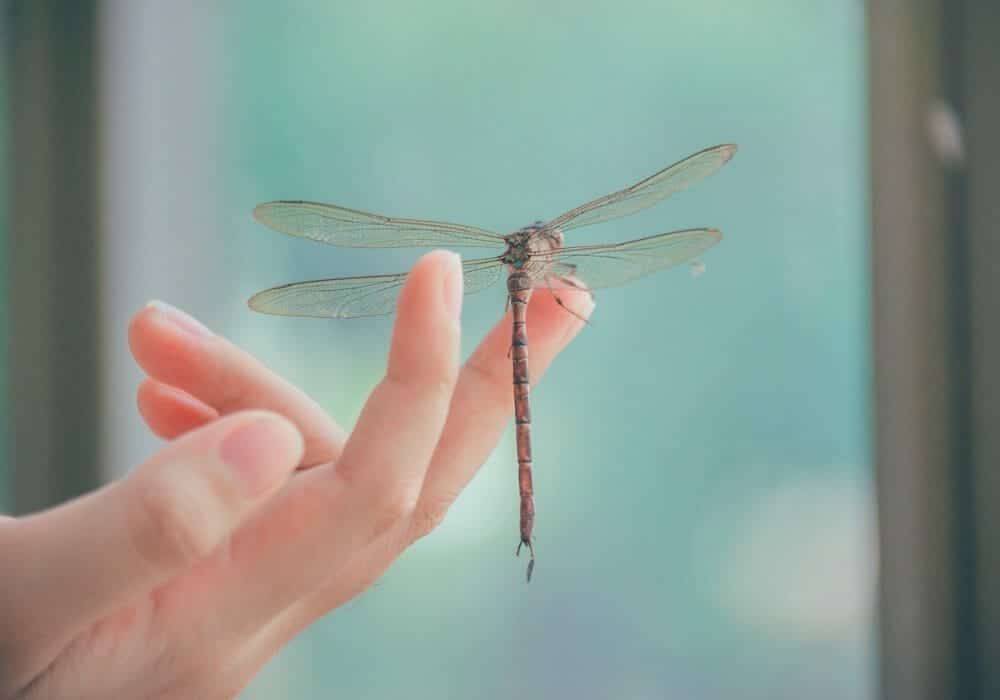
Dragonflies are at the top of the food chain in the insect world, both as a nymph and an adult.
Did you Know?
A nymph is the immature version of an insect that does not go through complete metamorphosis.
Research from the University of Adelaide, Australia, has discovered that dragonflies possess a trait thought only to be found in primates: selective attention.
When presented with more than one target, such as an insect swarm, part of their brain “locks-on” to a single target.
Selective attention ensures the dragonfly can filter any unnecessary stimuli that may cause distractions. As such, a dragonfly has a hunting success rate of 97%.
Due to its cognitive abilities, the dragonfly is the most deadly predator in the world.
#3 Fringed Jumping Spider (Portia)
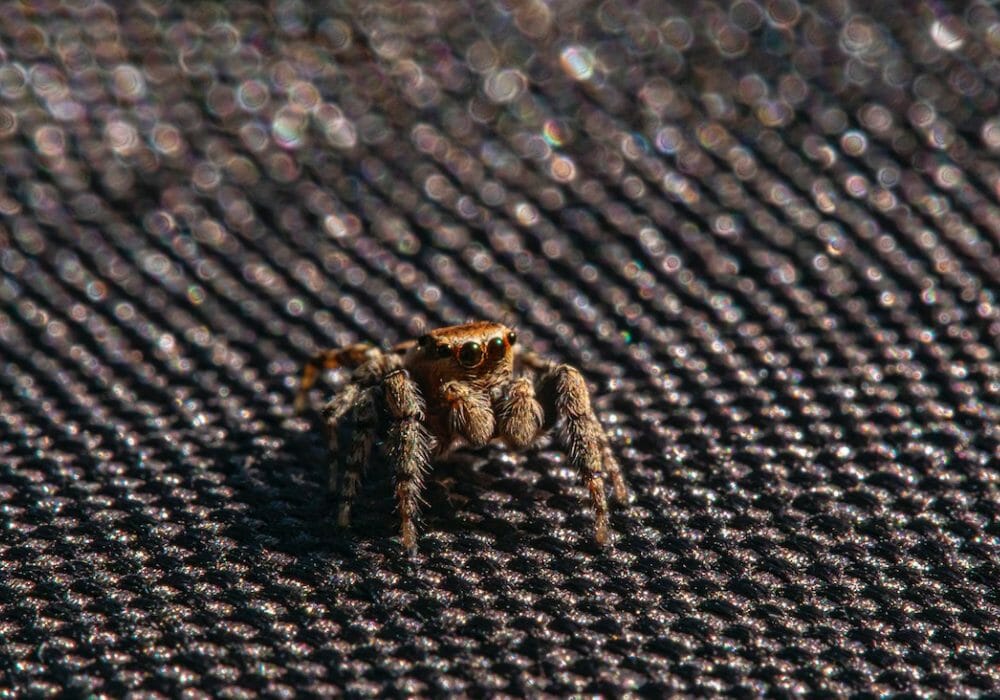
Imagine an insect with not just one superpower, but three: impressive jumping, exceptional eyesight, and high intelligence.
Meet Portia; a genus of araneophagic jumping spiders.
Did you Know?
Araneophagic is a term given to spiders that eat other spiders.
Not only can this ambush hunter take on spiders considerably larger than itself, it actively plots how to do so.
First, Portia uses its distinguished eyesight to locate potential prey. Then, Portia calculates the best possible route to catch the prey.
These jumping spiders have developed ingenious ways of luring victims close enough to leap on them. This includes delicately plucking at the victim’s web to send out specific vibrations.
If the hunt fails, Portia learns from its mistakes and changes their hunting behavior and style on the next hunt.
Watch Portia in action by clicking the link below:
#2 Ants
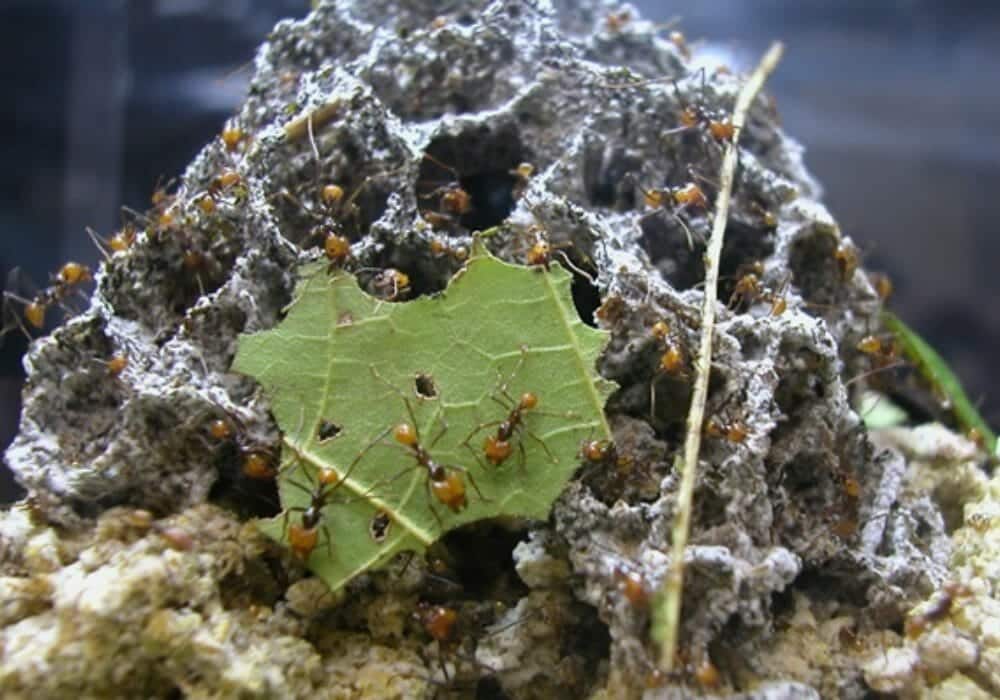
It is no secret that social insects display intelligence.
Ants are no exception.
Did you Know?
Eusocial insects, like ants, are insects that live within a colony. Individuals perform different tasks and only a select few have reproductive abilities.
They are farmers, cultivating fungi and rearing aphids.
They are military-minded, capable of assembling armies to attack or defend colonies.
They are efficient communicators, using chemical and olfactory signals to relay messages to one another.
Ants even teach their peers. Through a process referred to as “tandem running”, teacher ants guide students to food sources. They communicate through the use of antennae touching and landmark acquisition.
#1 Honey Bees
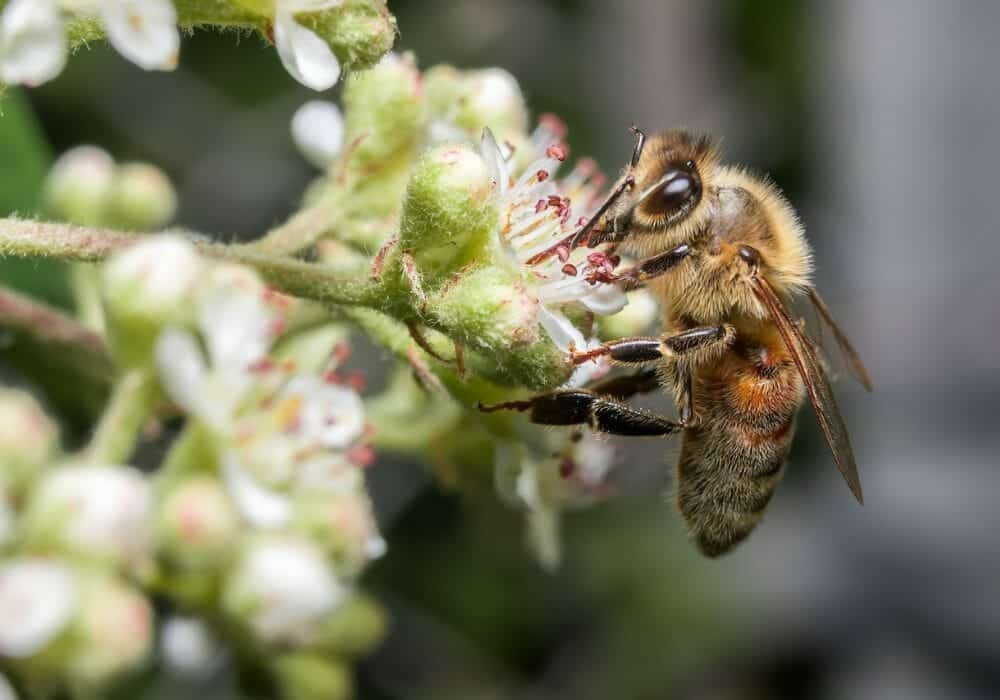
Honeybees are smart. Very smart.
What appears to be a random mass of bodies within the colony may be intelligent behavior.
Bees are efficient communicators.
Ecologist, Karl von Frisch, discovered honey bees perform specific movements to direct members of the colony to a new food source.
Coined the “waggle dance”, the bee will vibrate and move in a way that indicates a food source in relation to the sun.
Researchers in London have also discovered that honey bees are competent problem solvers.
The bees can learn, in return for a reward. The bees then pass this information on to other bees, so they too could receive a reward.
Observe a waggle dance by clicking the link below:
Conclusion
Humans, in our own way, are intelligent but so too are many insects we share our planet with.
Humans still have a lot to learn about life. Perhaps we should continue to look at the great achievements insects have mastered, to help develop our own society.
References
- Scienceshots, Evolution, Science, Feb 2018.
- Tarantula Hawk Article, Grand Canyon National Park, Nov 2015.
- Hopkin, M. Dung beetles push by the light of the Moon. Nature 2003.
- Guerra, P., Gegear, R. & Reppert, S. A magnetic compass aids monarch butterfly migration. Nat Commun 5, 2014.
- Frontiers in Physiology, invertebrate physiology, Jan 2020.
- The Harvard Gazette, Health and Medicine, How termites ventilate, Sept 2015.
- Current Biology, Vol 23, Selective Attention, Dec 2012.
- Frontiers in Physiology, Arthropod Intelligence, Oct 2020.
- Franks, N., Richardson, T. Teaching in tandem-running ants, Jan 2006.
- Riley, J., Greggers, U., Smith, A. et al. The flight paths of honeybees recruited by the waggle dance, Nature, Mar 2005.
Disclaimer
Earthlife.net does not provide medical advice. We do our best to help users understand the science behind living beings; however, the content in the articles and on the website is not intended to substitute for consultation with a qualified expert. By interacting with the website and/or our email service, you agree to our disclaimer. Remember that you must consult a specialist before using any of the products or advice on the web.

